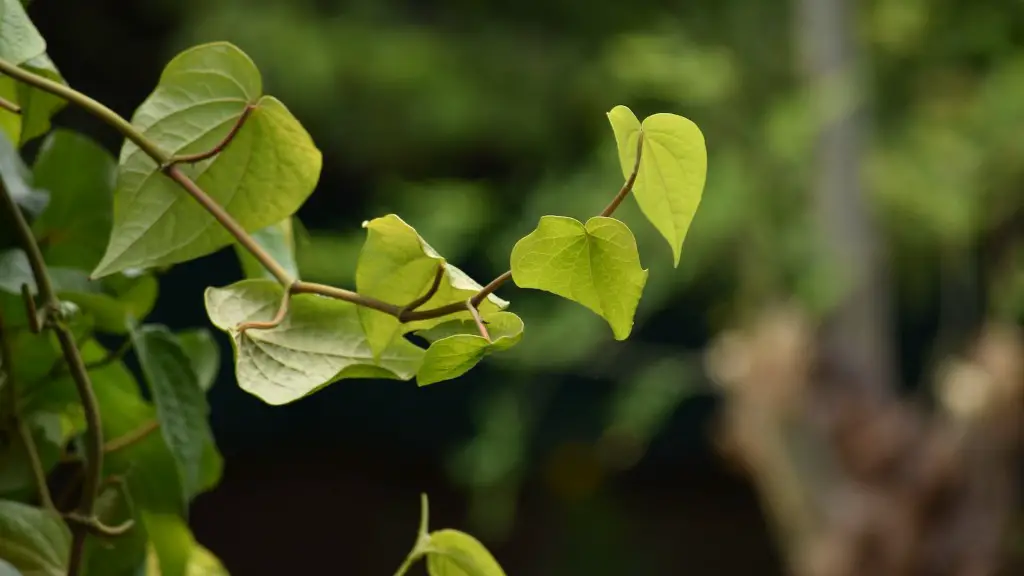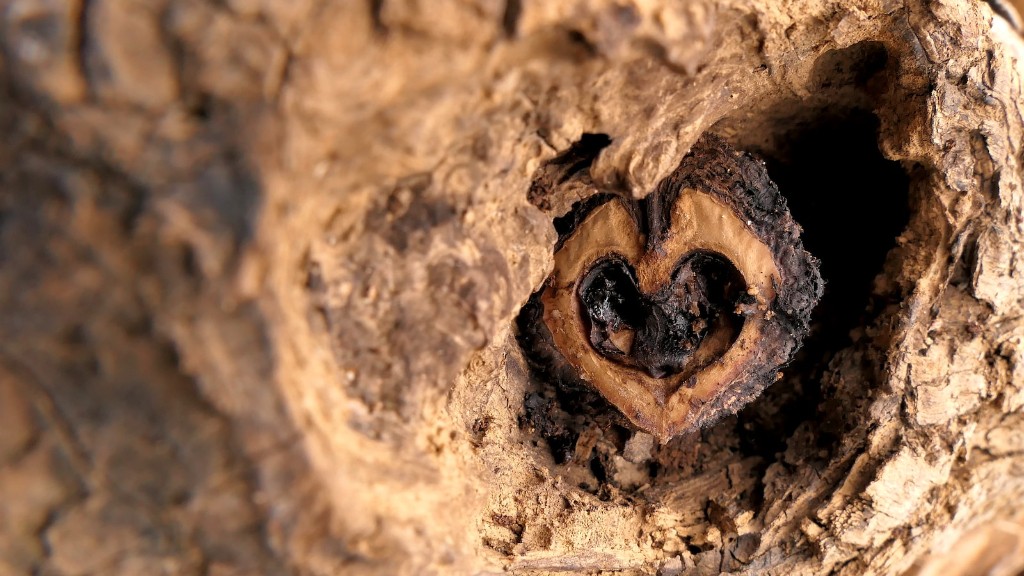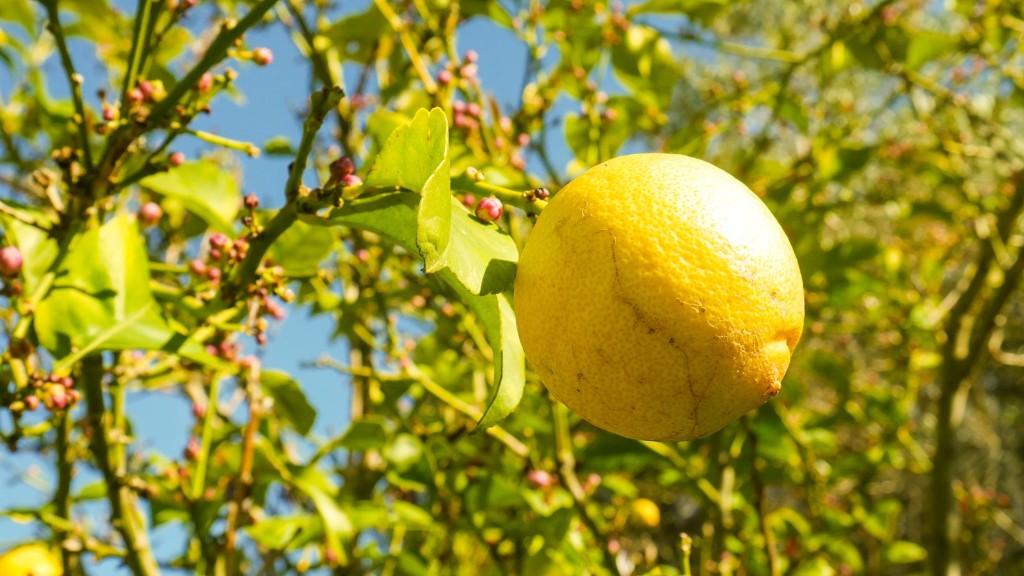Rooting a lemon tree cutting can be a tricky process, but with a few key steps you can be rewarded with an established and thriving lemon tree in no time. Taking lemon tree cuttings is relatively simple, but it doesn’t assure that the cutting will root, which could be a huge waste of time and energy if not done properly. Here’s how to make sure your cuttings will root and thrive.
Firstly, the aging process is important for successful rooting. You should remove all of the flowers from the stem, and then cut the stem just below where the flower was removed. You should then remove any leaves from the lower portion of the cutting before dipping the end of the cutting in rooting hormone. Allow the rooting hormone to absorb for up to a minute before transferring the cutting to a container filled with damp potting soil.
Next, the soil should be kept damp at all times, but without becoming overly wet. Good air circulation is essential for the rooting process, so the container should have holes in the bottom and the soil should be gently loosened before the cutting is placed in the container. The cutting should be placed in the soil so that the end that was dipped in liquid rooting hormone is facing upward.
Finally, the soil should be covered with a plastic bag that has been sealed with a rubber band. Ensure that the top of the bag is clear, as it will need ventilation, and then place the container in a warm area that has bright, indirect light. Check the soil daily to make sure it is still damp, and then the cutting should begin to root in about a week.
What To Do After Successful Rooting
Once the cutting has rooted, it can then be carefully transferred to a larger container or directly into a flower bed that has well-draining soil and gets about 6 hours of direct sunlight per day. The soil should still be kept slightly damp, but not saturated. It is recommended that a slow-release fertilizer be applied to the soil to promote healthy growth.
In the beginning, you should aim to take cuttings when the amount of daylight is gradually increasing, as this helps with successful rooting. Again, this process should be done while the tree is in bloom during the late spring or early summer. Select the healthiest shoots to take your cuttings from, as this will increase your chances of getting healthy, rooted lemon tree saplings.
If you’re taking cuttings from an existing tree, make sure that the health of the tree is clearly visible in the cuttings. And if you’re propagating a new tree from seed, always make sure that you’re purchasing the seeds from a reputable source. Damaged or weak seedlings are the result of poor environmental conditions or inadequate nutrition.
Keeping the Cuttings Watered
Once you have taken your cutting and put them in their potting containers, it is important to keep them watered. The soil should become moist but not soggy, so check it periodically with your finger to make sure it does not dry out. The potting soil should be fertilized regularly to encourage root growth.
It is also important to provide your cuttings with adequate light. Place the container near a window or in another location where they will get direct sunlight throughout the day. This will ensure that the roots are getting enough light energy to continue to grow and strengthen.
The last step is to prune the lemon tree cutting. Young trees need to be pruned in order to encourage new growth and reduce the amount of competing branches. This should be done by cutting off any weak, dead, or out-of-place branches, as well as thinning out crowded parts of the tree.
How to Determine Successful Lemon Tree Rooting
You may be wondering how to tell when your lemon tree cutting has rooted successfully. Generally speaking, healthy roots will appear from the ends of the cutting in about a week. If you notice that the roots are growing longer and thicker, it is a sign that the cutting has taken and will soon be ready for transplanting..
Another sign that your cutting has rooted successfully is the emergence of new leaves. Though it may take some time, these leaves will be a sure sign that the cutting has taken root and is now receiving the nutrients it needs to thrive. Once these signs are noticed, your cutting can then be transplanted into a larger pot or flower bed and allowed to continue to grow.
How to Care for Your Tree After Planting
If the cutting has successfully rooted, then all that’s left to do is provide good care for your lemon tree. Fertilize the soil periodically and make sure to water the tree frequently enough to keep the soil damp but not soggy. Proper pruning, mulching, and pest control are all important aspects of looking after a lemon tree.
The lemon tree should be protected from extreme temperatures, strong winds, and direct sunlight. If you live in a colder climate, it is important to bring the tree indoors during times of extreme cold weather and transfer it back outside when the temperature warms up again.
Leaving your tree in the same pot for more than two years will hinder its growth over time, so be sure to transfer it to a larger pot if necessary. The tree should be grown in a pot with adequate drainage and the pot should be changed every two to three years. Following a few simple steps when caring for your lemon tree will help ensure optimal growth and increased yield.
Possible Problems That May Arise
Although rooting a lemon tree cutting is a rewarding and relatively simple process, there are a few things that can go wrong. One of the most common issues is pests and disease. To help prevent the spread of pests, make sure that any tools you use are properly sterilized and that the containers and potting soil are free from pests before beginning.
Another potential problem is under or over watering. Under watering can cause the edges of the leaves to turn brown, while over watering can lead to root rot and a buildup of harmful bacteria. Always make sure that you are checking the soil’s moisture level at least once a week.
If your citrus trees develop brown spots or other discolorations, you may be dealing with a fungal issue. This can be prevented by providing the trees with adequate air circulation, as well as avoiding overcrowding the trees. If you do notice any discolorations, it is important to take action as quickly as possible to help prevent further spread.
Lastly, it is imperative to use a fertilizer specifically designed for citrus plants. These fertilizers contain higher amounts of nitrogen and potassium, which is essential for a thriving lemon tree. Additionally, the fertilizer should be applied during the late winter or early spring for optimal growth and yield.



